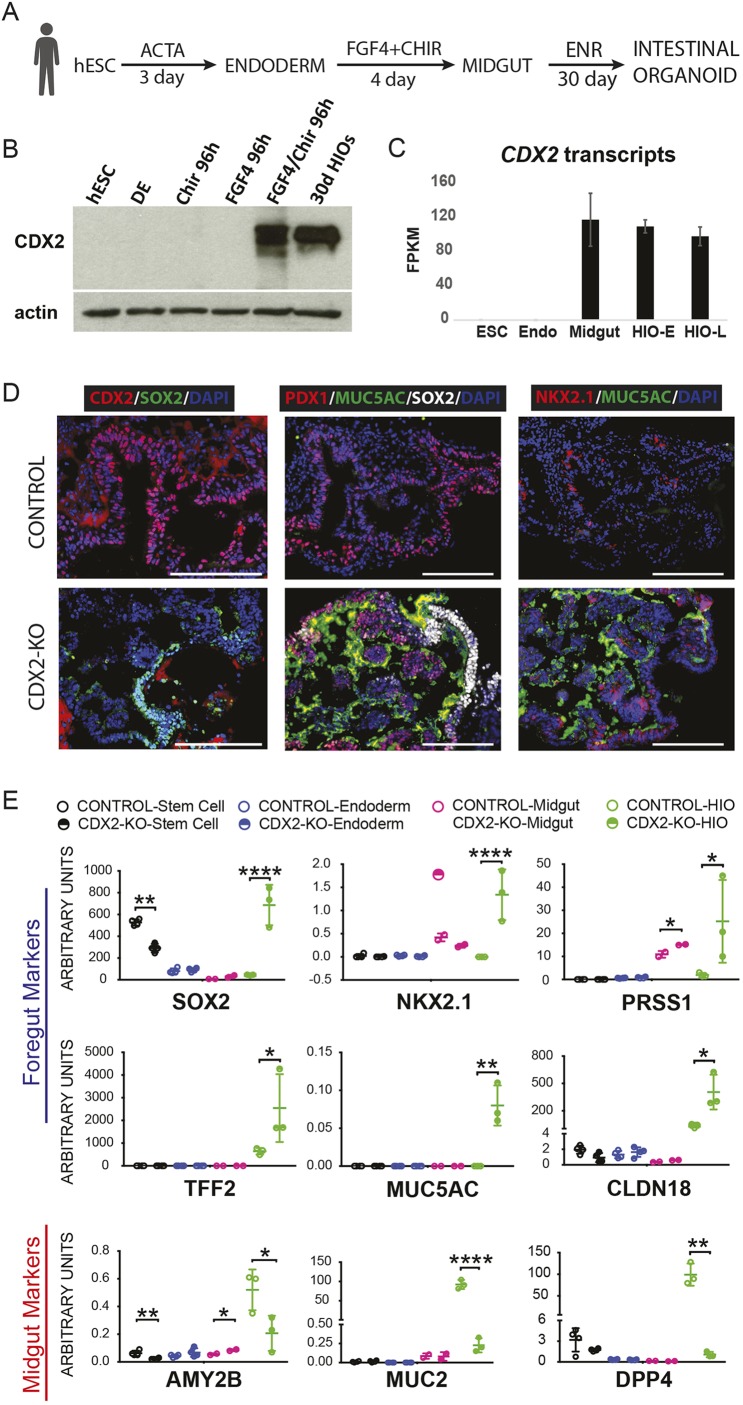Fig. 1.
CDX2 is required for human intestinal development. (A) Differentiation schema used to differentiate hESCs into human intestinal organoids (HIOs). ACTA, activin A treatment, 100 ng/ml; FGF4+CHIR, 500 ng/ml FGF4 + 2 µM CHIR99021; ENR, 100 ng/ml Egf, 5% Noggin-conditioned media and 5% R-SPONDIN2-conditioned media. (B,C) Immunoblot (B) and RNA-seq (E-MTAB-4168; Tsai et al., 2017) (C) show that CDX2 expression is only induced robustly after differentiation of ESCs into endoderm with activin and then induction of midgut specification via treatment with FGF4 (500 ng/ml) and the WNT agonist CHIR99021 (2 µM; Chir). HIO-E, HIO early, pre-transplant; HIO-L, HIO late, after transplant into mouse kidney capsule for further intestinal maturation. DE, definitive endoderm. (D,E) HIOs result from treating ESCs with this differentiation protocol, but ESCs lacking CDX2 as a result of CRISPR targeting (CDX2-KO, Fig. S1) do not give rise to HIOs, and instead give rise to organoids expressing genes characteristic of foregut lineages, as seen by immunofluorescence staining (D, representative of at least three independent experiments) and qRT-PCR (E) on organoids collected after 30 days in ENR (EGF, Noggin, RSPO) culture conditions, with each independent biological sample comprising three to five organoids pooled together. *P<0.05, **P<0.01, ****P<0.0001 (unpaired t-test). Scale bars: 200 µm.

